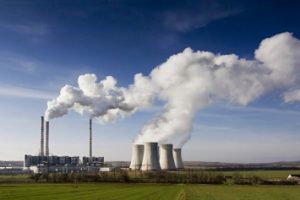Nine months after President Donald Trump entered the White House carrying a campaign promise to eliminate the Clean Power Plan (CPP), the Obama EPA’s most significant environmental regulation, the Trump EPA has taken its first rulemaking action to fulfill President Trump’s pledge.

The action comes in the form of a proposed rule to repeal the CPP in its entirety. In listing its reasons for the proposed repeal, the Trump EPA cites both the rule of law, that is, how the CPP exceeded the authority granted to the EPA Administrator by the Clean Air Act (CAA), and the policy direction in which President Trump pointed the Agency. That direction was contained in March 2017 Executive Order (EO) that instructed EPA Administrator Scott Pruitt to review the CPP and “suspend, revise, or rescind” the CPP in line with the energy policy presented in the EO.
The proposed repeal gives no indication that the EPA seriously considered revising the CPP, although the Agency says that it may in the future address the issue of greenhouse gas (GHG) emissions from fossil-fuel power plants.
There is some discussion in the proposal about the path such a rulemaking may take, but given Trump and Pruitt’s doubts about the degree to which human activity influences the climate—as well as Trump’s affinity for the coal mining industry—it would be hard to find a rulemaking the current administration will address with less enthusiasm.
Interpreting BSER
The proposal basically reprises a legal argument against the CPP that its opponents, including Pruitt when he was Attorney General of Oklahoma, have been advancing since the rule was proposed in June 2014 and promulgated in 2015 (October 23, 2015, FR). The core of that contention is that the CPP would achieve the desired GHG reductions by unlawfully forcing electric power providers to change the way they generate energy.
Specifically, to meet the reductions contained in the CPP, states would need to implement plans that would cause owners and operators of coal-fired power plants to undertake large scale conversions to natural gas and owners and operators of natural gas power plants to convert to renewable energy. The CPP describes these two actions as Building Blocks 2 and 3. The first of the three Building Blocks involves improving the heat rate at affected coal-fired power plants. Collectively these three building blocks comprise the best system of emission reduction (BSER), a CAA phrase and a required approach under CAA section 111(d), which formed the legal basis of the CPP.
In the interpretation offered in the proposal, Building Block 1 falls within the definition of BSER because it is a technological provision that owners and operators could implement at their own facilities.
Energy Policy Is Not Environmental Policy
“While Building Block 1 constituted measures that could be applied directly to a source—that is, integrated into its design or operation—Building Blocks 2 and 3 employed measures that departed from this traditional, source-specific approach to regulation and that were expressly designed to shift the balance of coal-, gas-, and renewable-generated power at the grid-wide level, subjecting these building blocks to claims that they constituted energy, rather than environmental, policy.”
The proposal discusses the legislative history of the CAA, Section 111, and best system of emission reduction and argues that when Congress developed the term, it intended the word system to be source specific unless specific authorization was otherwise provided. Moreover, states the proposal, the EPA has historically abided by the source-specific interpretation of BSER.
“Indeed, the EPA has issued numerous rules under CAA section 111 (both the limited set of existing-source rules under CAA section 111(d) and the much larger set of new-source rules under CAA section 111(b)),” says the Agency. “All those rules limited their BSER to physical or operational measures taken at and applicable to individual sources, with only one exception—a rule that was vacated by the D.C. Circuit on other grounds.
A Future for Building Block 1?
The Agency concludes that BSER must be something that physically or operationally changes the source itself and is taken at or applied to individual, particular sources.
“Generation shifting—which accounts for a significant percentage of the emissions reductions projected in the CPP and without which sources could not meet the CPP’s requirements and State plans could not be approved—fails to comply with this limitation,” according to the proposal.
The Agency notes that while it has no argument with Building Block 1 qualifying as BSER, it views this Building Block as inseparable from the CPP as a whole. Therefore, there is no proposal to retain Building Block 1 as means to control GHG reductions from power plants and no indication that any future rulemaking will bring back this provision.
